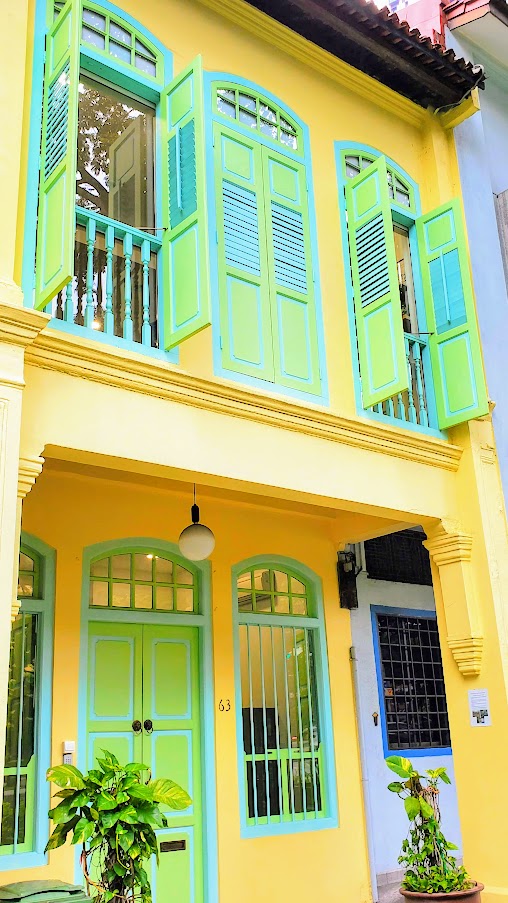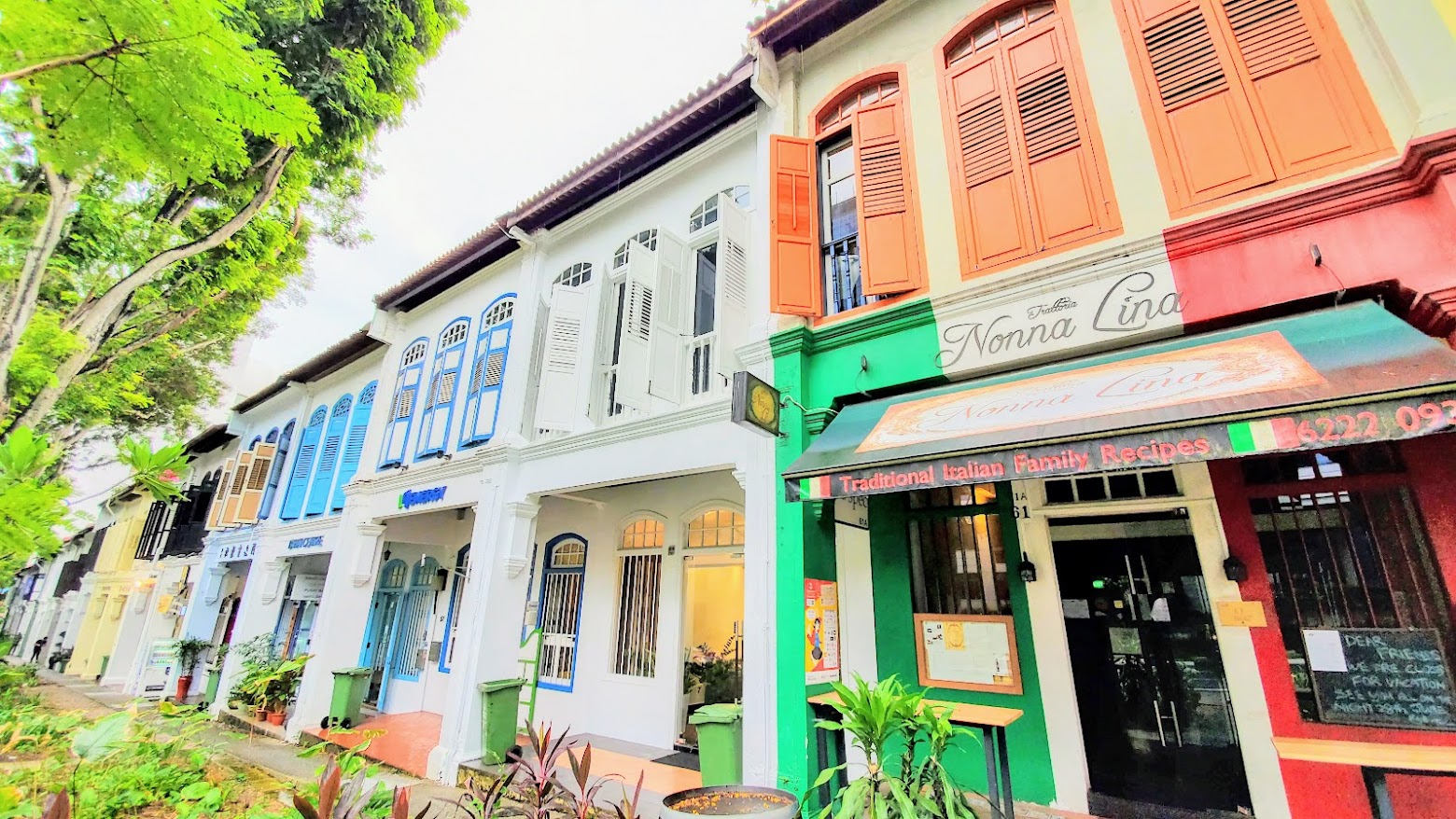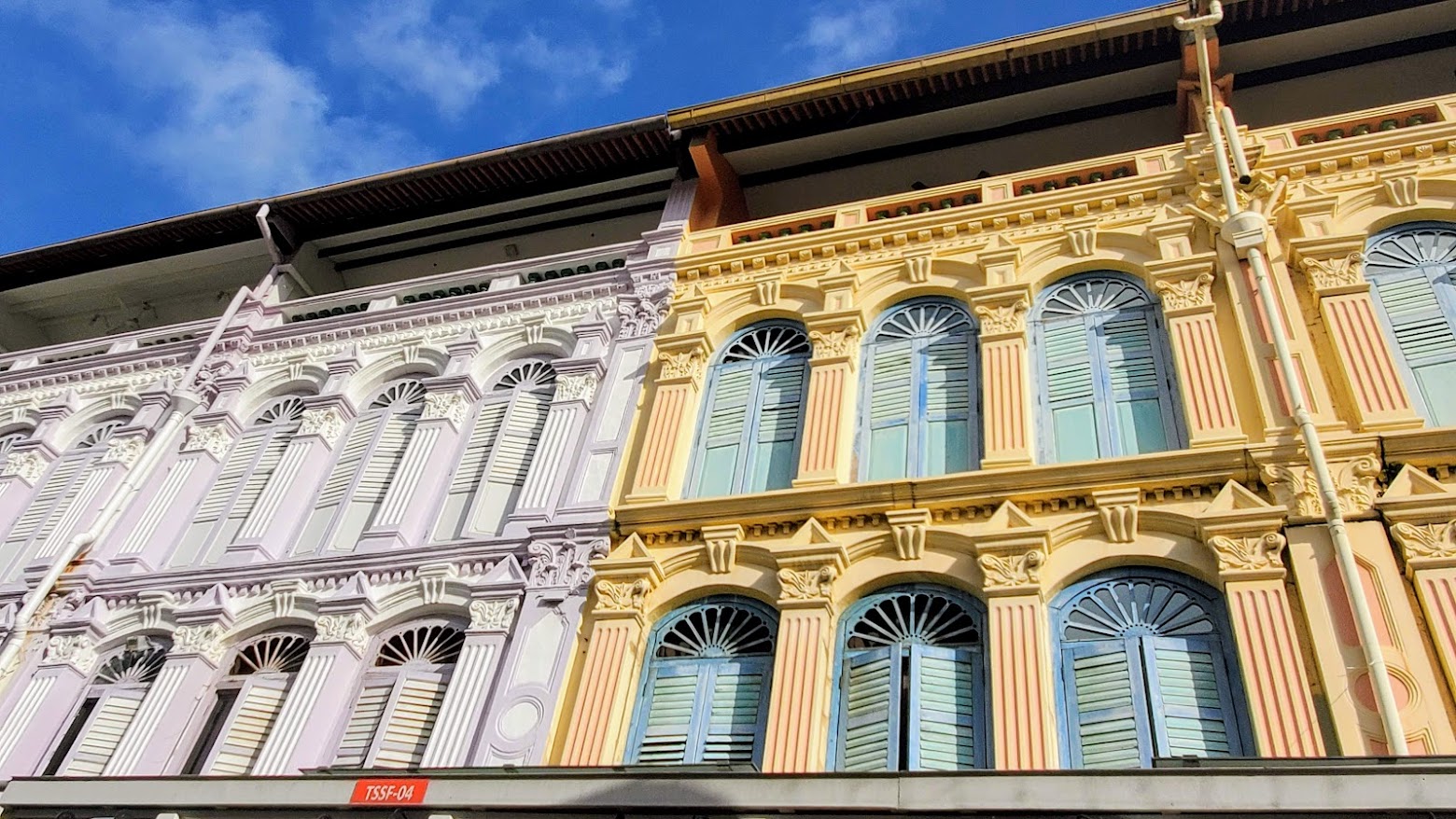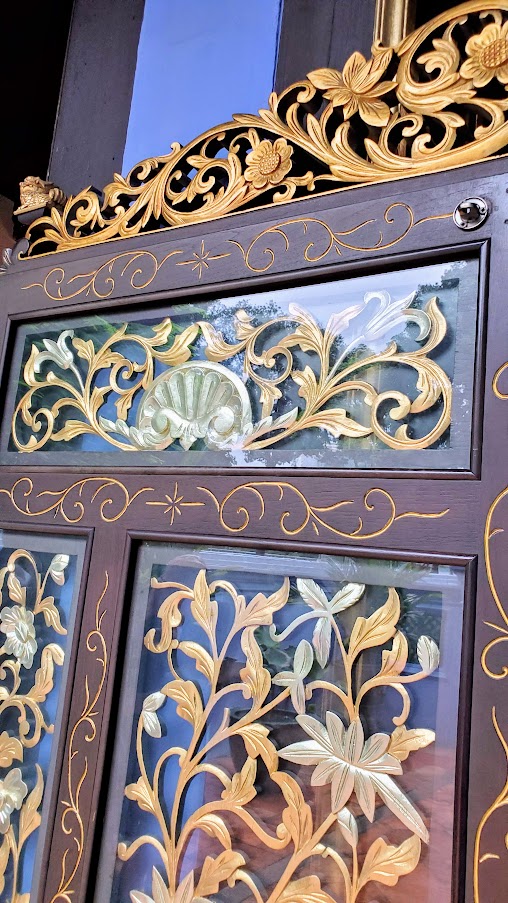Today I continue on with my series from my travels in Singapore. This time, I’m going to give you all the background I learned before and during my trip so you can appreciate the Peranakan Style buildings in Singapore, and share what they look like. I find them incredibly intriguing and eye-pleasing and took a lot of photos – this is a long photo post!

Singapore, Malaysia and Indonesia are the home of what is called Peranakan culture. Peranakans are descendants of Chinese traders who immigrated into these countries and married local women starting in the 15th century.
These descendant families were later also influenced by the British and Dutch colonialism and education systems of the 19th century, giving most the reputation of “The King’s Chinese” because they had more loyalty to Britain than China. The end result is a unique mix of Asian with Chinese and Malay, Indian, Arab, and other Southeast Asian influences along with Western European over multiple generations.


This has manifested itself in language (unfortunately most of it lost because of the dominance of English and Chinese), in the labor-intensive fusion of flavorful spices and ingredients and techniques in food (as you saw as part of with my dinner at Candlenut), and in the architecture. It’s quite a contrast between the clean lined styles of modern high rises of Singapore built over the past few decades with these all pre-WWII heritage buildings’ colors and decorative detail.

The typical Peranakan style building in Singapore has the same basic structure in which the first floor is the shophouse with living quarters above on the higher floors. The front has a small covered walkway that the 2nd floor living quarters extends over. This originates from an idea of founder of Singapore, Thomas Raffles, to have a “five foot way” for pedestrians to be protected and walk. Below: some examples of Peranakan shophouses from Chinatown




Below: some examples of Peranakan shophouses from Teo Hong Road and Bukit Pasoh Road (where a scene from Crazy Rich Asians was filmed) and Cantonment Road /close to Neil Road




Or, the first floor of the home has an initial courtyard before entering the receiving room. The first floor is set back from the main street. Peranakan style buildings are rectangular, long and narrow but deep. Multiple homes or shophouses tend to be built one right next to the other in a rowhouse. Some say the smaller street frontage is a reaction to how the Dutch taxed and measured land historically, or it may have been a tradition brought in from Chinese longhouses. Below: some examples of Peranakan homes on Neil Street




The mosiac tiles and ceramic and plaster decorative element that intersperse neo-classical western motifs and Chinese traditional symbolism and Malay eaves combine together with bright colors into Singapore eclectic that is like nothing else and I find completely charming. 







The Peranakans Chinese are sometimes called Straits Chinese, or Baba Nyonya, the Malay words for Man and Woman. This explains the name of Baba House, a unique opportunity to tour a Peranakan home managed by the National University of Singapore. Tours are limited to once a day and small group of a dozen people based on what the original building floors can hold, so book your reservation for a tour early (slots open 2 months ahead).

Photos were not allowed inside the home, but from what you see from the outside, it is a beautifully restored home that has interiors that reflect the 1920s context. During my tour, we learned so much about the significance behind a lot of the decor in terms of symbolism as well as practical functionality for the family. We looked at many examples of how a single piece of furniture here or there showed an intermingling of eastern and western aesthetics.



I leaned a lot from the stories told that I would have never learned on a self-guided visit, from all the meaning behind the sitting chairs in the reception room, to the open skyways within the interior, hidden compartments for the woman of the house to hide jewelry in her bed, the placement of mirrors and pathways to confuse evil spirits, to secret openings in the floor to look and hear from the second floor what is happening below. Completely and utterly fascinating and worth your time and mere S$10.


If you want to see even more then I did, consider visiting the detailed Peranakan Museum (check if open, it was closed for renovations during my visit until 2021). Another option is to visit and wander the Joo Chiat/Katong area district east of the main downtown/on the way to the airport. This area still has a lot of pre-war buildings including this iconic row of colorful homes:







